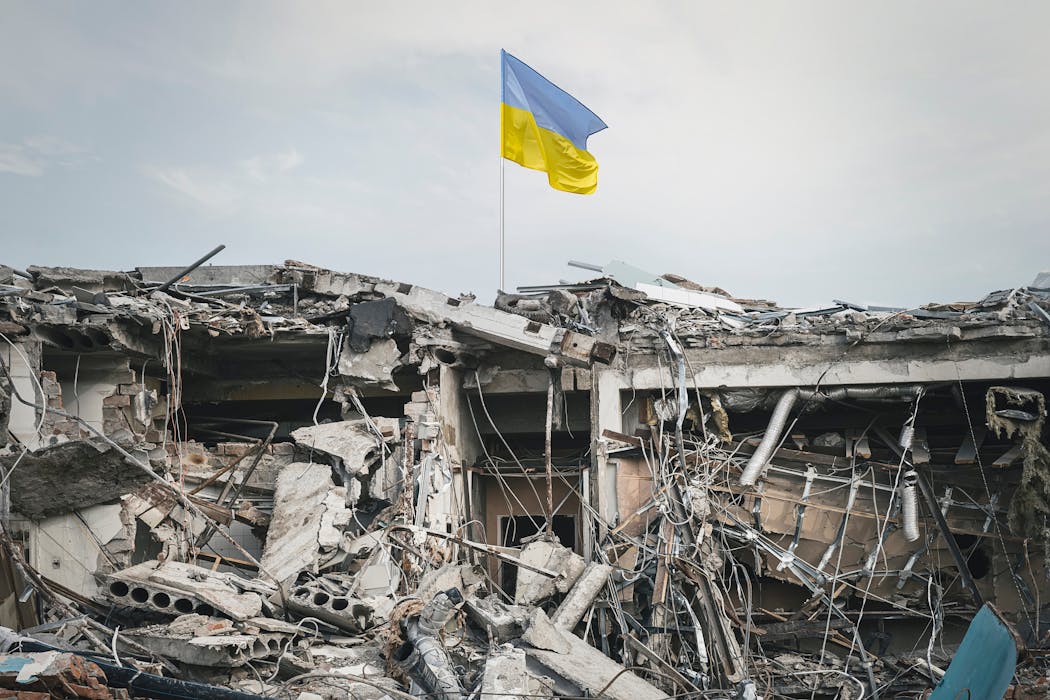Conflict and the climate crisis may mean it’s time to rethink what we mean by responsible investing
- Written by Chau Le, Senior Lecturer in Banking and Finance, University of Lincoln

Sustainable or responsible investing has experienced huge growth over the past decade. This investment approach is anchored in environmental, social and governance principles and is known as ESG. This set of standards is designed to ensure that funds are directed toward companies that protect the environment, have a positive impact on people through things such as labour standards, and operate ethically, transparently and with accountability.
Global ESG[1] assets are predicted to hit US$40 trillion[2] (£30 trillion) by 2030. Yet, despite the rise, inconsistencies in standards and data across ESG providers[3] make responsible investing far more complex than it should be.
The world today faces compounding crises – climate change, geopolitical instability and what economists call “macroeconomic fragmentation”. This refers to the breaking apart of global economic cooperation: countries are turning inward, imposing tariffs, pursuing divergent monetary policies, and allowing political tensions to impede cooperation on shared challenges.
The traditional boundaries of ESG are now being tested – and difficult questions emerge. Should ESG funds continue to exclude arms and defence firms? Or perhaps it is time to reconsider what sustainability really means in today’s volatile world.
Individual investors appear to be increasingly interested in making their money matter. But many remain unaware of how ESG funds are constructed – or what they may include. The presence or exclusion of defence companies is rarely disclosed clearly in fund documentation. This lack of transparency makes it difficult to align investments with personal ethics.
To make more informed choices, investors should demand clearer reporting, especially regarding dual-use technologies. This is tech that can be used for both civilian and military purposes and controversial sectors such as nuclear energy and surveillance technologies.
Investors could consider asking whether the fund explicitly discloses its position on defence, arms or dual-use technologies, as well as how it balances short-term geopolitical realities with long-term environmental sustainability. Fundamentally, they should consider whether what they know of the fund’s ethical stance aligns with their own values.
In an age of accelerating climate risks and geopolitical fragmentation, the ESG landscape is far from black and white. The inclusion of arms and defence in “ethical” or “responsible” investing may seem paradoxical, but it reflects a deeper shift.
These days, security and sustainability are increasingly intertwined. The real challenge is not just how we invest – but how we define the good we aim to achieve. As the world grows more complex, so too must the frameworks for responsible finance.
References
- ^ ESG (theconversation.com)
- ^ US$40 trillion (www.bloomberg.com)
- ^ ESG providers (www.sciencedirect.com)
- ^ Green Your Money (theconversation.com)
- ^ EU report (finance.ec.europa.eu)
- ^ reclassified defence (www.bbc.co.uk)
- ^ reversed this policy (www.wsj.com)
- ^ €800 billion (www.europarl.europa.eu)
- ^ IzzTony/Shutterstock (www.shutterstock.com)







